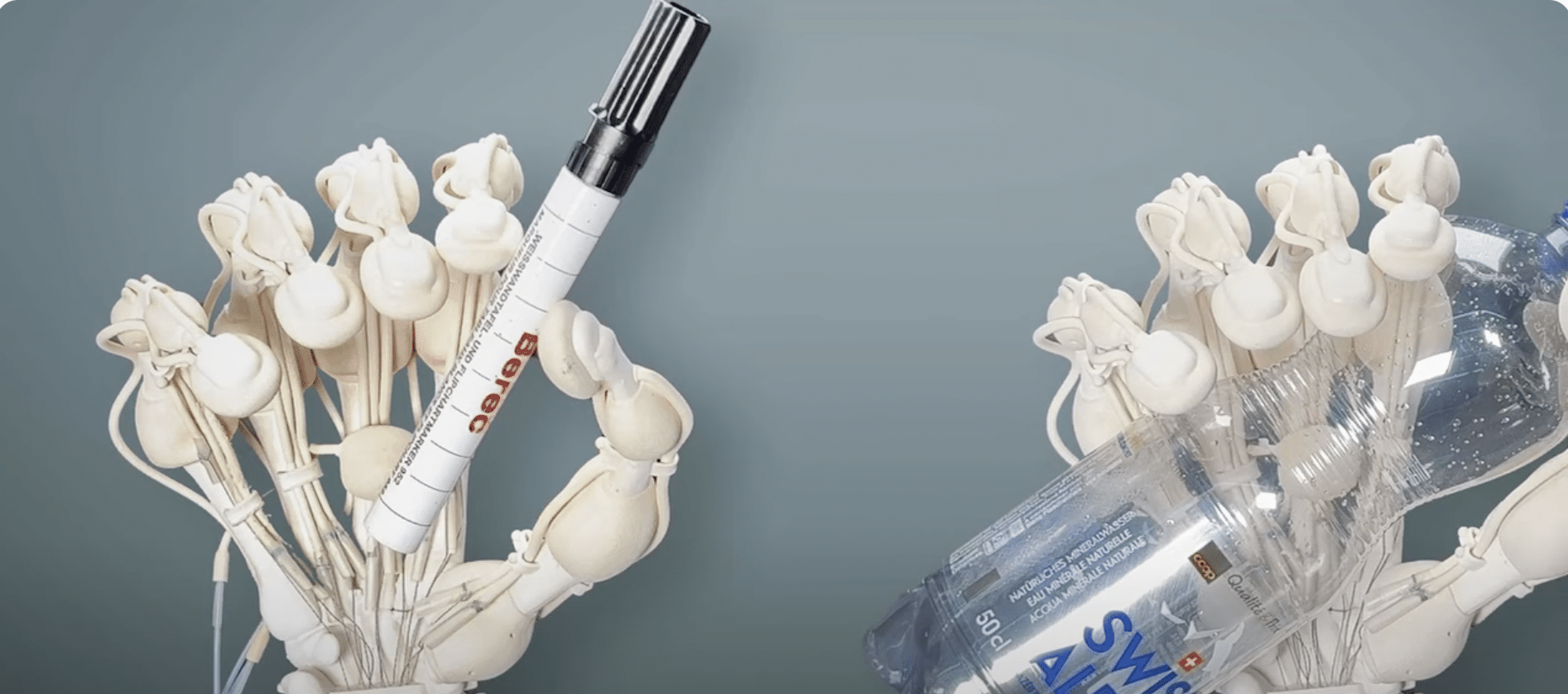Researchers at the Zurich-based ETH public university, along with a US-based startup called Inkbit, have done the impossible. They’ve printed a robot hand complete with bones, ligaments, and tendons for the very first time, representing a major leap forward in 3D printing technology.
It’s worth noting that the various parts of the hand were printed simultaneously, and not cobbled together after the fact, as indicated in a research journal published in Nature.
Each of the robotic hand’s various parts were made from different polymers of varying softness and rigidity, using a new laser-scanning technique that lets 3D printers create “special plastics with elastic qualities” all in one go.
This obviously opens up new possibilities in the fast-moving field of prosthetics, but also in any field that requires the production of soft robotic structures.
Basically, the researchers at Inkbit developed a method to 3D print slow-curing plastics, whereas the technology was previously reserved for fast-curing plastics.
This hybrid printing method presents all kinds of advantages when compared to standard fast-cure projects, such as increased durability and enhanced elastic properties. The tech also allows us to mimic nature more accurately, as seen in the aforementioned robotic hand.
“Robots made of soft materials, such as the hand we developed, have advantages over conventional robots made of metal. Because they’re soft, there is less risk of injury when they work with humans, and they are better suited to handling fragile goods,” ETH Zurich robotics professor Robert Katzschmann writes in the study.
This advancement still prints layer-by-layer, but an integrated scanner constantly checks the surface for irregularities before telling the system to move on to the next material type.
Additionally, the extruder and scraper have been updated to allow for the use of slow-curing polymers. The stiffness can be fine-tuned to create unique objects that suit various industries. Making human-like appendages is one use-case scenario, but so is manufacturing objects that soak up noise and vibrations.
MIT-affiliated startup Inkbit helped develop this technology and has already begun thinking about how to make money off of it. The company will soon start to sell these newly-made printers to manufacturers but will also sell complex 3D-printed objects that make use of the technology to smaller entities.










